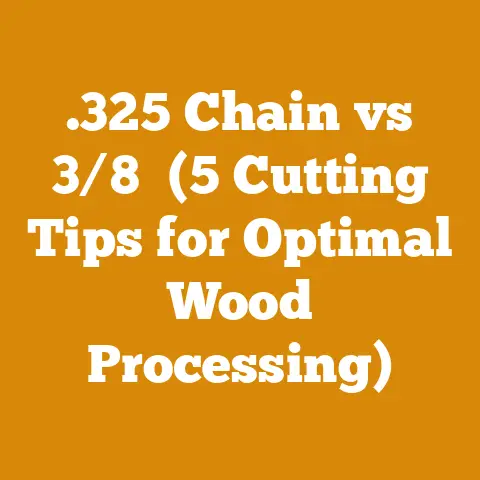Log Burner Boiler Central Heating Tips (Efficient Wood Heat Setup)
It was a bitterly cold January, the kind that seeps into your bones and refuses to leave. I remember vividly, huddled around a sputtering gas furnace, watching my bank account drain faster than the propane tank. That’s when I decided, enough was enough. I was going back to the basics, back to wood. But not just any wood stove; I was diving headfirst into the world of log burner boiler central heating. It was a daunting task, a complex system promising efficient wood heat, but the potential savings and the satisfaction of self-sufficiency were too enticing to ignore.
If you’re reading this, you’re likely in a similar boat, drawn to the allure of efficient wood heat and the potential of a log burner boiler central heating system. Maybe you’re tired of fluctuating energy prices, or perhaps you’re simply seeking a more sustainable and independent heating solution. Whatever your reason, you’ve come to the right place. I’m going to walk you through everything I learned, from the initial research to the satisfying warmth that now fills my home. This guide will cover everything from understanding the key concepts, choosing the right equipment, installation considerations, and maintenance tips, all geared towards maximizing the efficiency of your wood heat setup.
Log Burner Boiler Central Heating: An Introduction
Log burner boiler central heating systems offer a unique approach to home heating, combining the traditional appeal of a wood-burning stove with the efficiency of a modern central heating system. Instead of simply heating the room where the stove is located, these systems heat water, which is then circulated through radiators or underfloor heating throughout your entire home. This provides a more even and comfortable heat distribution compared to traditional wood stoves.
The beauty of these systems lies in their versatility. They can be integrated with existing heating systems, such as oil or gas boilers, providing a backup source of heat or even completely replacing them. Furthermore, they offer a sustainable and potentially cost-effective alternative to fossil fuels, especially if you have access to a readily available and affordable source of firewood.
Key Concepts Defined
Before we delve deeper, let’s clarify some essential terms:
-
Green Wood vs. Seasoned Wood: Green wood is freshly cut wood with a high moisture content (often above 50%). Seasoned wood, on the other hand, has been dried over time, reducing its moisture content to around 20% or less. Burning green wood is inefficient, produces more smoke, and can lead to creosote buildup in your chimney. Seasoned wood burns hotter, cleaner, and more efficiently.
-
BTU (British Thermal Unit): A BTU is a unit of energy. It’s the amount of energy required to raise the temperature of one pound of water by one degree Fahrenheit. In the context of heating, BTU is used to measure the heat output of a boiler or stove.
-
Creosote: A flammable, tar-like substance that builds up in chimneys and stovepipes as a result of incomplete combustion of wood. Creosote buildup is a serious fire hazard and must be regularly removed through chimney sweeping.
-
Thermal Store (Accumulator Tank): A large, insulated tank that stores hot water produced by the log burner boiler. This allows you to burn wood at a high rate to quickly heat the water, and then draw heat from the tank as needed, even when the fire is out.
-
Wet System vs. Dry System: In a wet system, the log burner boiler is directly connected to the central heating system, and the same water circulates through both. In a dry system, a heat exchanger transfers heat from the boiler water to the central heating system water. Dry systems are generally considered safer and more efficient.
Why Choose a Log Burner Boiler Central Heating System?
The decision to invest in a log burner boiler central heating system is a significant one. Here are some of the key advantages:
-
Cost Savings: With access to affordable or free firewood, you can significantly reduce your heating bills.
-
Environmental Friendliness: Wood is a renewable resource, and burning wood can be carbon neutral if sourced sustainably.
-
Energy Independence: Reduces reliance on fossil fuels and external energy providers.
-
Comfortable Heating: Provides even and consistent heat throughout your home.
-
Increased Home Value: A well-installed and efficient system can increase your home’s value.
1. Assessing Your Heating Needs and Home
The first step is to determine your heating needs. This involves calculating the heat loss of your home and determining the appropriate size of the log burner boiler.
-
Calculate Heat Loss: This is crucial for determining the BTU output required from your boiler. You can use online calculators, consult with a heating engineer, or perform a manual calculation based on factors like square footage, insulation levels, window types, and climate. A poorly sized boiler will either struggle to heat your home or cycle on and off too frequently, reducing efficiency.
- Example: Let’s say you have a 2,000 sq ft home in a cold climate with average insulation. A rough estimate might be 30 BTU per sq ft, resulting in a total heat loss of 60,000 BTU/hour. This means you’ll need a boiler capable of producing at least 60,000 BTU/hour.
-
Evaluate Your Existing Heating System: Determine if you want to integrate the log burner boiler with your existing system or replace it entirely. Integration allows you to switch between wood and another fuel source, providing flexibility and backup.
-
Consider Your Firewood Source: Assess the availability and cost of firewood in your area. Can you sustainably source your own wood, or will you need to purchase it? Factor in the cost of processing firewood, including tools like chainsaws, axes, and log splitters.
- Personal Experience: I initially underestimated the amount of firewood I would need. I quickly learned that a cord of wood (128 cubic feet) doesn’t last as long as you think, especially during a harsh winter. I now aim to have at least two years’ worth of seasoned wood on hand.
2. Choosing the Right Log Burner Boiler
Selecting the right boiler is paramount for efficiency and safety. Here are some factors to consider:
-
Boiler Type: There are several types of log burner boilers, including:
-
Conventional Boilers: These are the simplest and most affordable type. They burn wood and transfer heat to the water. However, they are generally less efficient than other types.
-
Gasification Boilers: These boilers burn wood in two stages. First, the wood is heated to produce gases. Then, these gases are burned in a separate combustion chamber, resulting in more complete combustion and higher efficiency. Gasification boilers produce less smoke and creosote.
-
Condensing Boilers: These are the most efficient type of log burner boiler. They extract heat from the flue gases, further increasing efficiency. However, they are also the most expensive.
-
-
BTU Output: Match the boiler’s BTU output to your home’s heat loss calculation.
-
Efficiency Rating: Look for boilers with high efficiency ratings. This indicates how much of the wood’s energy is converted into usable heat.
-
Safety Features: Ensure the boiler has safety features like over-temperature protection, pressure relief valves, and automatic shut-off mechanisms.
-
Brand Reputation and Warranty: Research different brands and read reviews to ensure you’re choosing a reliable and well-supported product.
- My Choice: After extensive research, I opted for a gasification boiler. While the initial cost was higher, the increased efficiency and reduced emissions made it a worthwhile investment in the long run.
3. Selecting a Thermal Store (Accumulator Tank)
A thermal store is essential for maximizing the efficiency of your log burner boiler. It allows you to burn wood at a high rate to quickly heat the water, and then draw heat from the tank as needed, even when the fire is out.
-
Sizing the Thermal Store: The size of the thermal store depends on the size of your home, the BTU output of the boiler, and your heating habits. A general rule of thumb is to have a thermal store with a capacity of 10-15 gallons per 1,000 BTU of boiler output.
- Example: If you have a 60,000 BTU boiler, you’ll need a thermal store with a capacity of 600-900 gallons.
-
Insulation: Choose a thermal store with excellent insulation to minimize heat loss.
-
Material: Thermal stores are typically made of steel or stainless steel. Stainless steel is more durable and resistant to corrosion but also more expensive.
-
Features: Look for thermal stores with features like multiple ports for connecting to different heating circuits and temperature sensors for monitoring the water temperature.
- Tip: Consider future expansion when sizing your thermal store. You might want to add solar panels or other renewable energy sources in the future.
4. Planning the Installation
Proper planning is crucial for a successful installation. This involves determining the location of the boiler, thermal store, and other components, as well as planning the plumbing and electrical connections.
-
Location: Choose a location for the boiler that is accessible for loading wood and cleaning. Ensure adequate ventilation and clearance around the boiler for safety and maintenance. The thermal store should be located close to the boiler to minimize heat loss.
-
Plumbing: Plan the plumbing connections between the boiler, thermal store, radiators, and any existing heating systems. Use appropriate pipe sizes and materials to ensure proper flow and prevent leaks.
-
Electrical: Plan the electrical connections for the boiler, pumps, and controls. Ensure the wiring is properly sized and grounded.
-
Chimney: Ensure your chimney is properly sized and in good condition. A properly sized chimney is essential for proper draft and to prevent creosote buildup. Consider having your chimney inspected by a professional chimney sweep.
-
Permits and Regulations: Check with your local authorities to determine if any permits are required for the installation. Ensure the installation complies with all applicable building codes and regulations.
- Lesson Learned: I underestimated the complexity of the plumbing. I ended up hiring a qualified plumber to ensure the connections were done correctly and safely.
5. Installing the Log Burner Boiler and Thermal Store
This is a complex task that should ideally be performed by qualified professionals. However, if you have experience with plumbing and electrical work, you may be able to do some of the work yourself.
-
Positioning: Carefully position the boiler and thermal store in their designated locations. Ensure they are level and stable.
-
Plumbing Connections: Connect the boiler to the thermal store, radiators, and any existing heating systems. Use appropriate fittings and sealant to prevent leaks.
-
Electrical Connections: Connect the boiler, pumps, and controls to the electrical system. Ensure the wiring is properly sized and grounded.
-
Venting: Connect the boiler to the chimney using appropriate stovepipe and fittings. Ensure the stovepipe is properly sealed and supported.
-
Testing: After the installation is complete, test the system to ensure it is working properly. Check for leaks, proper flow, and correct temperature readings.
- Safety First: Always disconnect the power before working on electrical components. Wear appropriate safety gear, including gloves and eye protection.
6. Preparing Your Firewood
The efficiency of your log burner boiler depends heavily on the quality of your firewood. Proper preparation is essential for burning clean and hot.
-
Wood Species: Different wood species have different BTU values. Hardwoods like oak, maple, and ash generally have higher BTU values than softwoods like pine and fir.
- Data: Oak typically yields around 24 million BTU per cord, while pine yields around 15 million BTU per cord.
-
Felling: If you’re harvesting your own wood, use proper felling techniques to ensure your safety and the safety of others. Wear appropriate safety gear, including a helmet, eye protection, and hearing protection.
- Chainsaw Selection: For felling larger trees, I recommend a chainsaw with a bar length of at least 20 inches and an engine displacement of 50-60 cc. Stihl and Husqvarna are two reputable brands.
-
Bucking: Cut the logs into manageable lengths for splitting and burning. The ideal length depends on the size of your firebox.
-
Splitting: Split the logs into smaller pieces to speed up the drying process.
- Tool Recommendation: A hydraulic log splitter can significantly reduce the effort and time required for splitting firewood. Look for a splitter with a splitting force of at least 20 tons.
-
Seasoning: Stack the firewood in a well-ventilated area to allow it to dry. The seasoning process typically takes 6-12 months, depending on the wood species and climate.
-
Stacking Method: I prefer to stack my firewood in rows, with air gaps between the rows to promote airflow. I also cover the top of the stack to protect the wood from rain and snow.
-
Moisture Content: Aim for a moisture content of 20% or less before burning. You can use a moisture meter to check the moisture content of the wood.
-
7. Operating Your Log Burner Boiler
Once your system is installed and your firewood is seasoned, you can start operating your log burner boiler.
-
Starting a Fire: Start with a small fire and gradually add more wood as needed. Use dry kindling and newspaper to get the fire going.
-
Loading Wood: Load the firebox with wood, ensuring there is adequate airflow around the wood.
-
Air Control: Adjust the air controls to regulate the burning rate. More air will result in a hotter fire, while less air will result in a slower fire.
-
Monitoring: Monitor the water temperature in the thermal store and adjust the burning rate as needed to maintain the desired temperature.
-
Ash Removal: Regularly remove the ash from the firebox to maintain proper airflow.
- Insight: I’ve found that starting with a top-down fire (kindling on top of the larger logs) burns cleaner and produces less smoke.
8. Maintaining Your Log Burner Boiler System
Regular maintenance is essential for ensuring the efficient and safe operation of your log burner boiler system.
-
Chimney Sweeping: Have your chimney swept at least once a year, or more frequently if you burn a lot of wood. Creosote buildup is a serious fire hazard.
-
Boiler Cleaning: Regularly clean the firebox and heat exchanger to remove ash and soot. This will improve the efficiency of the boiler.
-
Pump Maintenance: Inspect the pumps regularly to ensure they are working properly. Lubricate the bearings as needed.
-
Plumbing Inspection: Inspect the plumbing connections for leaks. Repair any leaks immediately.
-
Safety Checks: Regularly check the safety features, such as the over-temperature protection and pressure relief valves.
- My Routine: I schedule a professional chimney sweep every spring after the heating season is over. I also perform a visual inspection of the boiler and plumbing connections every month.
9. Optimizing Your Wood Heat Setup
Once you’re comfortable with the operation and maintenance of your system, you can start optimizing it for maximum efficiency.
-
Wood Storage: Store your firewood in a dry, well-ventilated area to prevent it from reabsorbing moisture.
-
Burning Techniques: Experiment with different burning techniques to find what works best for your boiler and your firewood.
-
Insulation: Insulate your hot water pipes and thermal store to minimize heat loss.
-
Thermostat Settings: Adjust your thermostat settings to optimize comfort and energy savings.
-
Heat Distribution: Ensure your radiators are properly balanced to provide even heat distribution throughout your home.
- Strategic Advantage: I installed a programmable thermostat that automatically adjusts the temperature based on the time of day and my occupancy schedule. This has significantly reduced my energy consumption.
10. Safety Considerations
Safety is paramount when operating a log burner boiler system.
-
Carbon Monoxide Detectors: Install carbon monoxide detectors in your home to protect against carbon monoxide poisoning.
-
Smoke Detectors: Ensure your smoke detectors are working properly.
-
Fire Extinguisher: Keep a fire extinguisher readily available near the boiler.
-
Clearance Around Boiler: Maintain adequate clearance around the boiler to prevent fires.
-
Proper Ventilation: Ensure adequate ventilation in the boiler room to prevent carbon monoxide buildup.
-
Regular Inspections: Have your system inspected by a qualified professional on a regular basis.
- Personal Story: A friend of mine experienced a chimney fire due to creosote buildup. Fortunately, no one was hurt, but the damage was significant. This incident reinforced the importance of regular chimney sweeping and proper maintenance.
Case Study: Upgrading an Existing System for Enhanced Efficiency
Let me share a specific example of how I helped a neighbor improve his existing log burner boiler system. He had a conventional boiler that was inefficient and produced a lot of smoke. His firewood consumption was high, and he was constantly tending to the fire.
-
Problem: Inefficient conventional boiler, high firewood consumption, frequent fire tending.
-
Solution: Upgraded to a gasification boiler and added a smaller (500 gallon) thermal storage tank. We also improved the insulation around his existing pipes and added a zone control system to better manage the heat distribution.
-
Results: Firewood consumption was reduced by approximately 40%. Smoke emissions were significantly reduced. He only needed to load the boiler once or twice a day. The zone control system allowed him to heat only the areas of his home that were in use, further reducing energy consumption.
-
Cost: The total cost of the upgrade was around $10,000, including the boiler, thermal store, plumbing, and electrical work.
-
ROI: Based on the reduced firewood consumption and improved efficiency, he estimated that the system would pay for itself in about 5-7 years.
Tool Specifications
Here’s a breakdown of some key tools I use and recommend for wood processing and firewood preparation:
- Chainsaw:
- Type: Gas-powered (for heavy-duty use) or electric (for lighter tasks)
- Engine Displacement: 50-60 cc (for felling larger trees), 40-50 cc (for bucking and limbing)
- Bar Length: 20 inches (for felling), 16 inches (for bucking and limbing)
- Brands: Stihl, Husqvarna, Echo
- Safety Features: Chain brake, throttle lock, anti-vibration system
- Axe:
- Type: Splitting axe (for splitting firewood), felling axe (for felling trees)
- Weight: 6-8 lbs (splitting axe), 3-4 lbs (felling axe)
- Brands: Fiskars, Gransfors Bruks
- Material: Forged steel
- Hydraulic Log Splitter:
- Splitting Force: 20-30 tons
- Engine: Gas-powered or electric
- Cycle Time: 10-15 seconds
- Brands: Champion, NorthStar, Huskee
- Features: Horizontal or vertical operation, adjustable wedge height
- Moisture Meter:
- Type: Pin-type or pinless
- Range: 6-40% moisture content
- Accuracy: +/- 1%
- Brands: General Tools, Wagner Meters
Costs and Material Specs
Here’s a general overview of costs and material specifications:
It takes time to master the techniques and optimize your system.
Next Steps
If you’re ready to take the plunge into log burner boiler central heating, here are some practical next steps:
- Calculate Your Heat Loss: Determine the BTU output required from your boiler.
- Research Boiler Options: Explore different types of log burner boilers and choose one that meets your needs and budget.
- Consult with Professionals: Talk to qualified plumbers and heating engineers to get advice on installation and system design.
- Source Your Firewood: Secure a reliable source of firewood and start seasoning it.
- Plan Your Installation: Develop a detailed plan for the installation, including the location of the boiler, thermal store, and other components.
- Obtain Permits: Check with your local authorities to determine if any permits are required.
- Install Your System: Install your system according to the manufacturer’s instructions and all applicable codes and regulations.
- Operate and Maintain Your System: Learn how to operate and maintain your system safely and efficiently.
Conclusion
Setting up a log burner boiler central heating system is a significant undertaking, but the rewards are well worth the effort. With careful planning, proper installation, and diligent maintenance, you can enjoy efficient, sustainable, and cost-effective wood heat for years to come. It’s a journey that combines the satisfaction of self-sufficiency with the warmth and comfort of a well-heated home. Embrace the challenge, learn from your experiences, and enjoy the warmth of efficient wood heat. And remember, that cold January that started my journey? It’s now just a distant memory, replaced by the cozy warmth of my wood-heated home. Good luck with your project!
-






